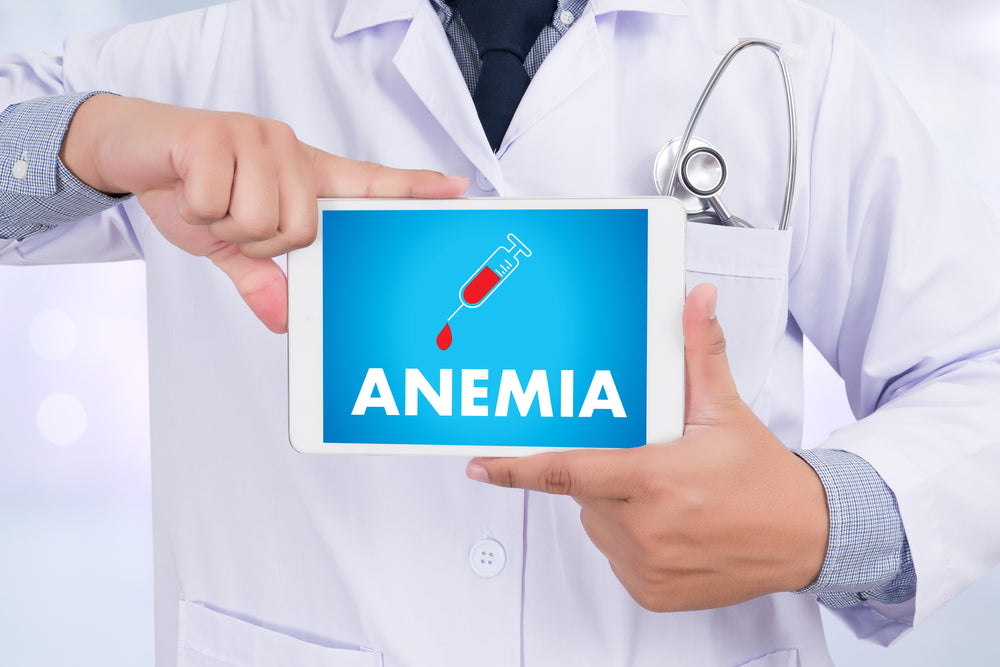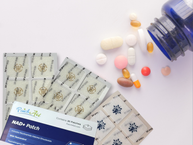Iron-deficiency anemia is common worldwide, and older adults are also at risk. Why might this happen, including in the United States where food is so abundant? Here are some reasons why iron-deficiency anemia is common among older adults, and why Iron Patches by PatchAid may be right for you.* Be sure to talk to your healthcare provider before using any type of dietary or nutritional supplement.
Reasons for Iron-Deficiency Anemia Among Older Adults
Older adults are at risk for nutrient deficiencies. These are some common causes of iron-deficiency anemia.
Malabsorptive and gastrointestinal disorders. If you are having trouble absorbing nutrients, you might be low in iron. Celiac disease, irritable bowel disease, and colitis can reduce absorption.
Bariatric surgery. Absorption may be decreased, and dietary intake may be low as well.
Low dietary intake. If you do not consume foods that are high in iron, you may be low in iron. Eating highly processed foods is common if you are not able to cook well for yourself or shop regularly, and such foods are lower in natural nutrients than whole foods.
Low intake of vitamin C.Vitamin C helps your body absorb some forms of iron. You may be low in iron if you are not eating many foods that are high in vitamin C. Fresh fruits and vegetables are the best sources, so if you are having trouble obtaining fresh foods regularly, you may not be getting optimal levels of vitamin C.
Certain medications. Some medications can get in the way of iron absorption or utilization in your body. Ask your healthcare provider if you think you may be in this situation.
Low intake of vitamin A. People who are deficient in vitamin A can also be low in iron. Vitamin A sources include liver and other organ meats, butter, and fruits and vegetables such as carrots, sweet potatoes, cantaloupe, spinach, and kale.
High inflammation. Inflammatory conditions can lead to lower levels of iron. While acute inflammation is linked to things like injuries and infections, many people experience higher levels of chronic inflammation as they age. It is linked to conditions such as heart disease and diabetes.
Bleeding disorder (excessive). If you get a lot of bruises or you bleed internally, you are losing a lot of blood. When you lose blood, you are losing red blood cells, which contain iron in hemoglobin.
These are not the only causes of low iron. It is best to talk to your doctor if you have concerns.
Assessing Iron Status in Older Adults
If you or your healthcare provider thinks you may be low in iron or have iron-deficiency anemia, it may be a good idea to get tested. Usually, you can get a few blood tests to check iron status. You do not need to be fasting to get your bloodwork done, and these are simple tests that most labs can do.
A complete blood cell count, or CBC, is a common starting place. A low red blood cell count can show the possibility of iron-deficiency anemia. Your doctor may also get you tested for kidney function and B vitamin levels. The results of these tests can help guide your doctor to a diagnosis.
Your healthcare provider might also ask you if you are experiencing any signs or symptoms of iron-deficiency anemia. These are some possible ones.
- Fatigue and muscle weakness
- Shortness of breath
- Headaches
- Rapid heartbeat
- Frequent colds or other infections
Your healthcare provider might also ask about your diet to see if you eat a lot of iron-rich foods. These are some of them.
- Red meat
- Egg yolks
- Poultry and fish
- Beans and lentils
- Spinach, kale, and other leafy green vegetables
- Fortified grains
Even if you do eat these foods, though, it is still possible to be deficient in iron.
Iron Patches by PatchAid
What is the best way to overcome iron deficiency if you are an older adult? Supplements tend to be far more effective than food if you already have a deficiency. You can get iron from oral supplements, such as liquids or capsules, but there are a few concerns with them.
- Some people don’t like swallowing pills or liquid vitamins.
- They are known for causing constipation or other types of gastrointestinal discomfort.
- You may be taking multiple medications and not want to take another oral supplement.
- It can be hard to time iron supplements and food intake if you are using other medications.
Using a PatchAid Patch to get iron lets you avoid these problems. To use the patches, just apply one to an area of skin that is clean and hairless. Leave the patch on for up to 8 hours, and then remove it. Discard it, and repeat with a new patch the next day.
PatchAid has two patches focused on iron. The Simply Iron Patch has 50 mg of iron, or 278% of the daily value, from certified organic curry. It also has 90 mg of vitamin C, or 100% of the daily value. Vitamin C can improve iron absorption.
The Iron Plus Patch has 50 mg of iron, as well as 450 mg of vitamin C. It also has antioxidants vitamin A and astaxanthin, as well as vitamin B9.
Iron Patches by PatchAid:
- May support healthy red blood cells.*
- May protect cells against damage from free radicals.*
- May support normal immune function.*
Iron-deficiency anemia is common among older adults for many reasons, but there are things you can do to prevent or overcome it. PatchAid Iron Patches are easy to use and avoid side effects related to iron absorption in the gastrointestinal tract. Just ask your healthcare provider if you think you may be low in iron, and whether a PatchAid Iron Patch may be right for you.
*The Food and Drug Administration has not evaluated these statements. PatchAid patches are not intended to diagnose, treat, cure or prevent any disease. Anyone with a medical condition should seek the advice of a licensed medical practitioner. Individual results may vary.







